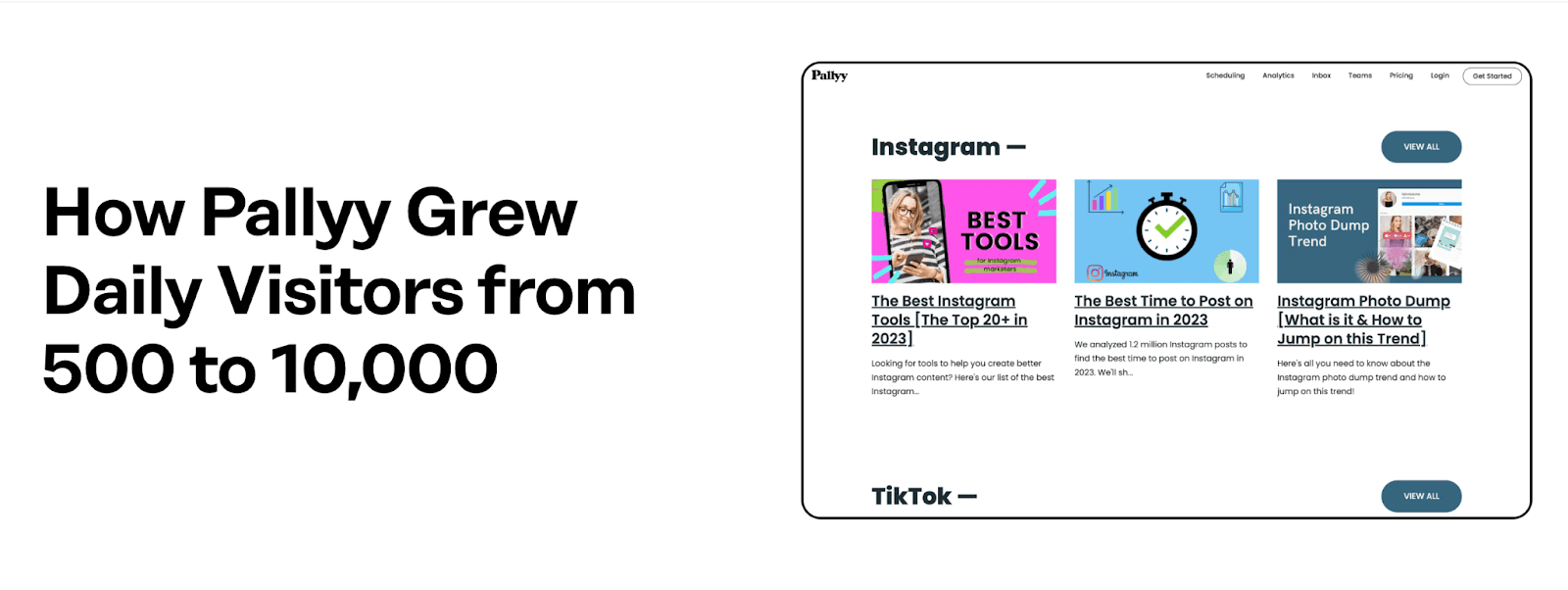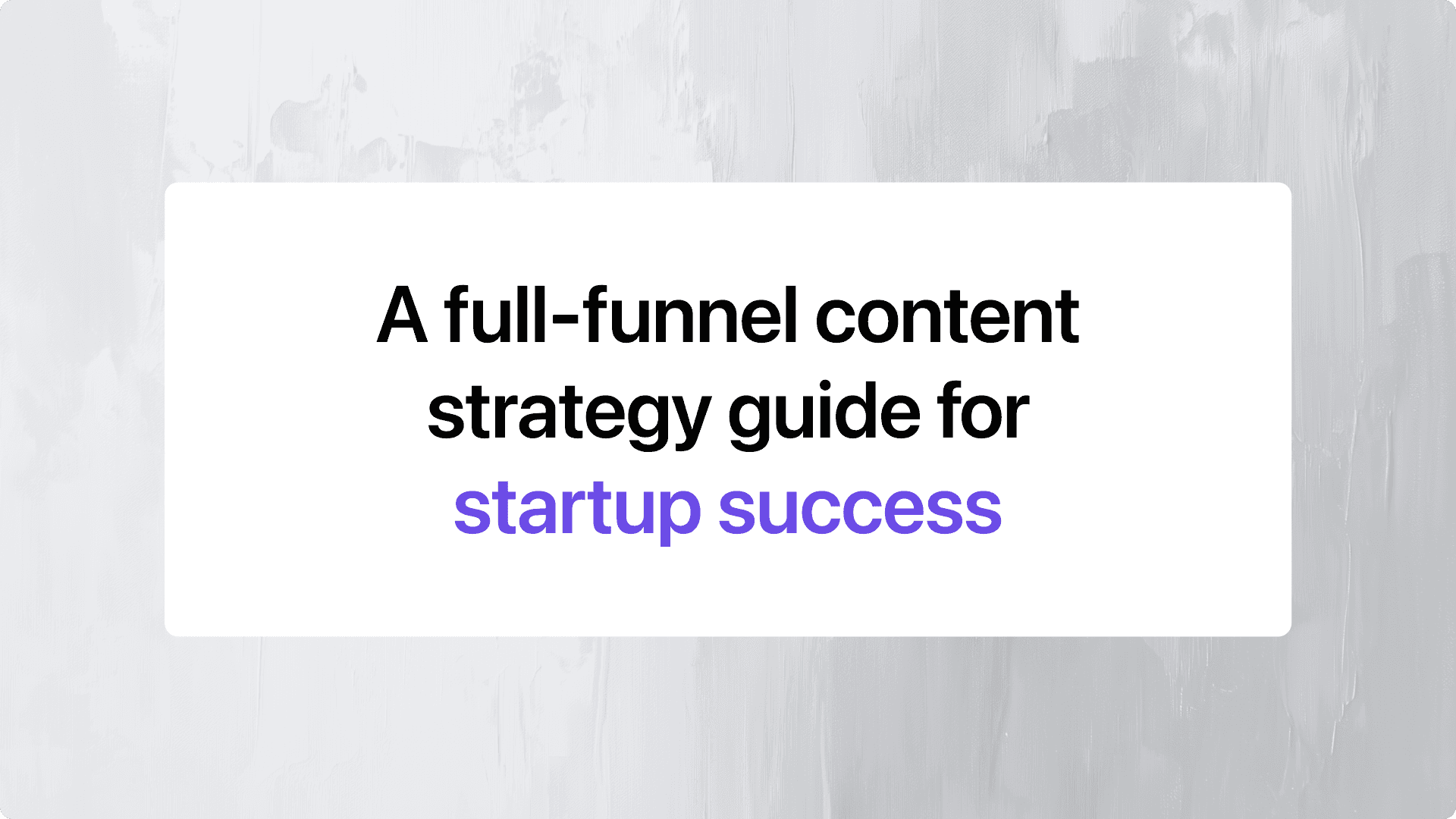Friday 18 October 2024
·

Arcane
Official
Image credit:
Arcane
tl;dr
In B2B, content is the roadmap that guides potential users from awareness to purchase. Done well, it addresses their questions, debunks concerns, and sparks interest in your product or service.
Great content makes your target audience feel heard. It builds trust by showing that you deeply understand their pain points and needs before offering a solution.
In this deep dive, we look at how to map content to each stage of the buying journey, taking a page from CMS-builder Prismic’s Playbook. Their smart content strategy is built around a well-structured funnel, delivering content that's both highly engaging and incredibly valuable and includes multi channel strategy.
1. Top of Funnel
At this stage, prospects become aware of a need but aren’t yet familiar with your solution. For example, they might need a new website but haven't decided whether to outsource it to an agency, hard code it, or use a CMS. The goal is to gain their hard-earned attention by consistently posting content without being overly promotional.
A good rule of thumb is:
80% value-driven content
20% sales-led content
The content should be helpful, providing tangible benefits to your audience while positioning you as the expert. Let’s look at how Prismic uses content to build ToFu awareness.
Prismic frequently posts educational resources that tackle their audience's initial head-scratchers.
Prismic’s YouTube tutorials teach developers useful skills such as “How to Build Javascript Frameworks“ and “Build a 3D e-commerce landing page”—many of which have gained over 25’000+ views.
Their playbooks for marketers teach tactics to improve SEO, generate website traffic, and increase conversion.
The team uses LinkedIn to build credibility by posting about the latest CMS trends. This cleverly positions them as a trustworthy source of information without the hard sell.
So how does this contribute to Prismic’s ToFu goals? Prismic’s social media channels drive on average 6k monthly website visitors from social and organic accounts for 96% of search traffic - an impressive 42k visitors per month. What’s even more interesting: while Prismic’s LinkedIn only has 20% as many followers as their YouTube channel, it drives equally as much website traffic. (source: Similarweb)
2. Middle of Funnel
At the MoFU stage prospects start to evaluate specific solutions that could solve their problem. It’s your job to show them how your product meets their needs. Your content should highlight your unique selling point a.k.a how you stand out from the competition.

Prismic does this through:
Case Studies showing how their product drives real business results. Notice how Prismic demonstrates how their product helped Pallyy grow their daily visitors from 500 to 10’000? That’s a convincing stat right there.
Comparison Guides: these highlight the pros and cons of different tech stacks, gently nodding prospects in Prismic’s direction.
LinkedIn Lives: Regularly hosting webinars doesn’t just allow their audience to ask questions in real-time, but puts a familiar face on the team.
3. Bottom of Funnel
As decision time comes closer, the content should address any lingering objections. If you’ve done a good job, prospects at this stage demonstrate a clear intention to purchase. This could be by requesting a quote, demo, or booking a trial. Now is the time to get into the nitty-gritty of your product and features.

Let’s flip another page in Prismic’s playbook to see how:
Prismic Chronicles are monthly product updates highlighting new features and how to make the most out of them.
Prismic’s Product Manager also does YouTube tutorials of new features, providing a step-by-step guide for how to use them
Their review page is packed with user quotes from marketers, developers, and agencies. (Read their testimonials playbook for tips on how to nail it).
4. Post-purchase

Content is important even after you’ve sealed the deal. The Prismic Academy, for example, provides in-depth lessons on how to use the platform. This works magic for retention and engagement rates.
Here are 5 post-purchase content types worth considering:
Onboarding guides
Tutorials & How-to’s
Best practice
Up-selling & cross-selling
Recommendations
Voilá! You’ve just made your users your evangelists.
Key Takeaways
We hope this deep dive has given you ideas on effectively mapping content to the funnel. Here is a quick recap:
ToFu: Be a helpful expert. Provide valuable, educational content to build trust and establish expertise.
MoFu: Showcase your unique value. Use case studies, comparison guides, and Q&As to differentiate yourself.
BoFu: Address remaining concerns. Leverage product demos, updates, and testimonials to convert leads.
Post-Purchase: Engage existing customers. Offer onboarding guides and tutorials to create brand advocates.
Great content marketing isn't about volume, but about creating valuable content that truly resonates with your audience. Kickstarting the content engine can feel daunting, but it’s worth the effort. With a solid strategy (and a little help from Arcane) you can turn leads into loyal customers.







